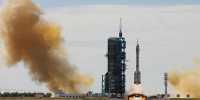Although most are not visible to the naked eye, 12,000 satellites orbiting the earth, from weather monitoring to internet beaming to rural people, these complex scientific tools make their atmosphere uplift our atmosphere and only come down as time goes on.
But there is a problem – what to do once the satellite is not in use? Did it turn into space debris, or was it brought back to earth? Upon re-entry, most of the satellites not only ignite as they ignite through the Earth’s dense atmosphere, but the limestone devices make it and reach the surface. If this is the case, satellite operators must prove that the risk of such an impact due to a casualty is only 1 in 10,000.

Therefore, the best option is to ensure that the satellite is completely extinct before it touches the ground. The manufacturers call this the Design for Damage (D4D), an initiative by the European Space Agency (ESA) as part of an effort to reduce space junk. This is a demonstration by the ESA, a partner of Kongsberg Defense and Aerospace, who continues to prove that their solar array drive module (a structural bit that always makes the solar panel face the sun) never reach the ground it should enter the atmosphere.
In the video below, they use a plasma wind tunnel to simulate re-entry conditions and the results speak for themselves. By examining the thermal edges of the satellite, they can tell if there is a possibility of its survival on Earth even before they send something into space. Encouraging the side of the plasma wind tunnel just one of the few times it is destroying an object in its path.
A plasma wind tunnel completely evaporates a satellite model in a video from the European Space Agency (ESA), showing how the speed and heat of atmospheric re-entry can dissociate the balkist portion of a space satellite. This is because the rapid destruction of space debris entering the Earth’s atmosphere can pose a serious danger if the debris in that space survives the pressure of re-entry. By testing the heat shields of satellites, engineers can design a spacecraft that is strong enough to do their job, but it will ignite safely in the atmosphere when it lands, ESA representatives said in a statement.















